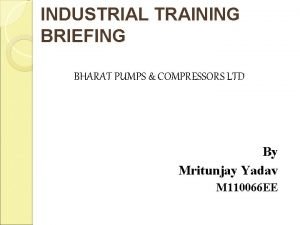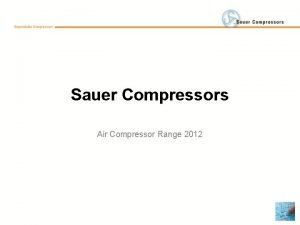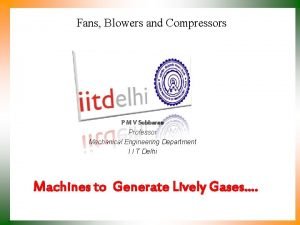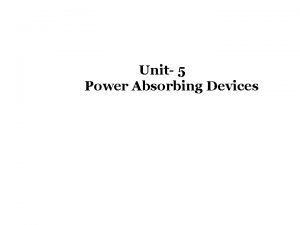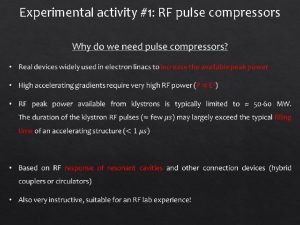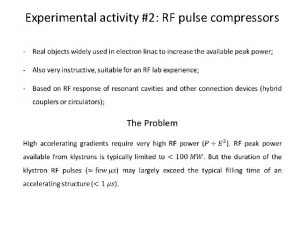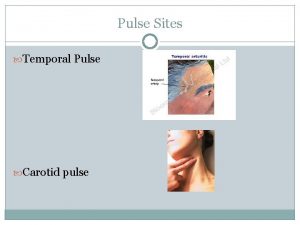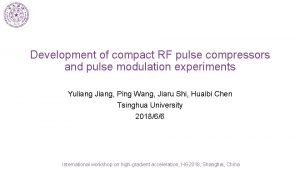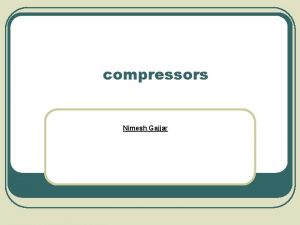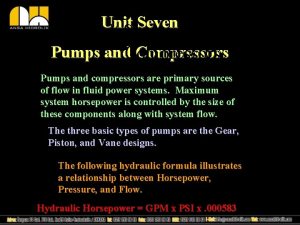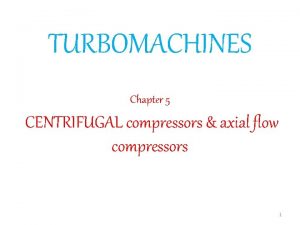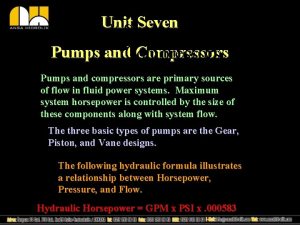Experimental activity 2 RF pulse compressors The Idea












- Slides: 12

Experimental activity #2: RF pulse compressors

The Idea: SLED (Stanford Linac Energy Doubler) Let’s compress the energy of the RF pulse in about 1 filling time to increase the peak power to the maximum! Pulse Compression A factor of 4 in power corresponds to a factor of 2 in accelerating gradient, i. e. In beam energy. Smart idea! But how a large RF power flowing in a waveguide can be manipulated in order to be compressed? This idea has been firstly implemented at SLAC in the 70’s [1]. The compression is obtained by capturing the RF power reflected by high-Q resonant cavities. [1] Farkas et al. - SLED A method of doubling SLAC energy

Coupling coefficients of a resonant cavity «Real» resonant cavities are NOT perfectly closed volumes, i. e. at least 1 opening (port) must be present to allow the RF power to flow in (and out). The extra-power flow through the cavity couplers, in addition to the power loss in the walls, may significantly change the characteristics of the resonance. This effect is known as “cavity loading”. The loaded cavity Q-factor is lowered by the power coupled out through the cavity ports and results to be:

Wave reflection in guide terminated on a resonant load A resonant cavity is a non-matched load for a waveguide or a transmission line, and can be modeled as an RLC parallel circuit. An RF wave travelling from the generator toward the cavity is always partially reflected at the cavity input. The reflected wave can be calculated according to:

Cavity reflected waves and input coupling coefficient Lorentzian network transfer function Let’s calculate and plot the wave reflected by a cavity excited by a pulsed source.

Lorentzian network response to RF Pulses The response of a Lorentzian network to an RF step pulse is:

Lorentzian network response to RF Pulses The response of a Lorentzian network to an RF rectangular pulse is:

RF step pulse reflected by a resonant cavity The reflected power of a Lorentzian network to an RF step pulse has the following transfer function: In time domain:

RF rectangular pulse reflected by an over-coupled resonant cavity The wave reflected by an over-coupled cavity excited by a rectangular RF pulse is: The RFL peak field is maximum at the end of the FWD pulse, and its value exceeds the peak of the FWD itself. This effect can be enhanced by forcing a 180° phase jump in the driving pulse at a certain time before the end of the pulse. By doing that we induce an equivalent step in the driving signal of double amplitude which adds in phase with the signal originated by the first rising front of the driving RF pulse.

But. . .

All this power has to be delivered to the accelerator and not to the power units (e. g. klystrons) Circulators are non-reciprocal (typically) 3 -ports devices whose scattering matrix is ideally given by: 90° hybrids are non-reciprocal (typically) 4 ports devices whose scattering matrix is ideally given by:

Experimental activity #2 • • Frequency domain: tuning demonstration Time domain: set-up of the RF pulse – CW signal at 2856 MHz – Pulsed signal at 2856 MHz (5 us length, 100 Hz rep. rate) • Time domain: visualization of SLED output pulse w/o 180° phase jump 90° hybrid – Resonant frequency fine tuning • Frequency domain: realization of the 180° phase jump – Design of a 180° phase shifting circuit – Functionality cross-check of the 180° phase shifter provided – Actual phase shift measurement – Timing of the trigger signals • Time domain: visualization of SLED output pulse with 180° phase jump – Eventual optimization of the SLED pulse – Qualitative measurement of energy/power gain – Scan Tjump vs energy gain Input port High Q cavities Output port
 Bpcl industrial training
Bpcl industrial training Sauer compressors
Sauer compressors Fan blowers & compressors
Fan blowers & compressors Power absorbing machine
Power absorbing machine Fans blowers and compressors
Fans blowers and compressors Gardner denver blower georgia
Gardner denver blower georgia Disadvantages of experimental research
Disadvantages of experimental research Experimental vs non experimental
Experimental vs non experimental Experimental vs non experimental
Experimental vs non experimental Nonexperimental study
Nonexperimental study What are the 5 types of non experimental research design
What are the 5 types of non experimental research design Theme vs. central idea
Theme vs. central idea Main idea stated and implied
Main idea stated and implied
